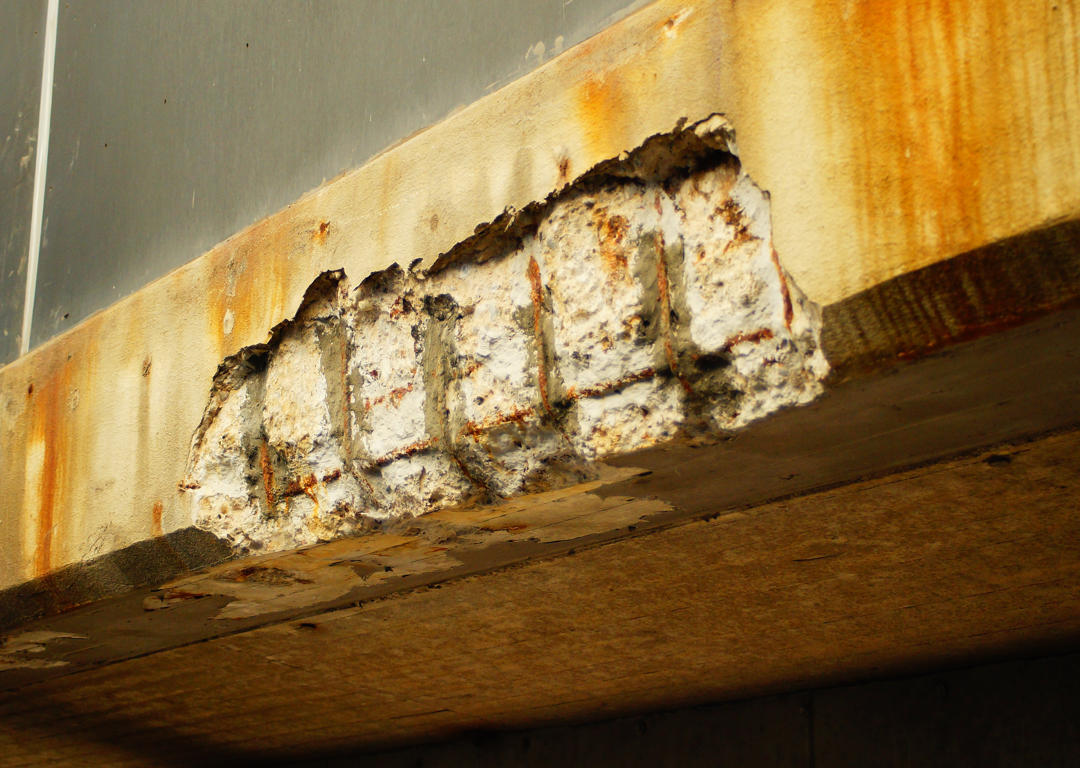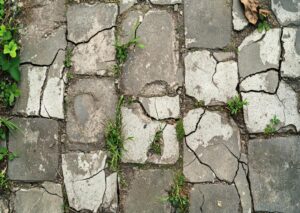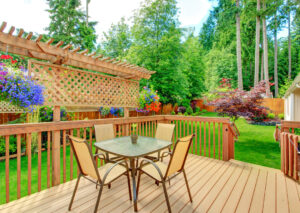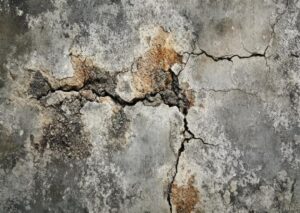As the cold winter months approach, protecting your concrete surfaces becomes a top priority for property owners, especially in climates like Colorado’s, where harsh winters are common. Concrete is a durable material, but winter weather can significantly damage it, leading to costly repairs if not addressed promptly. Understanding the causes of winter concrete damage and knowing the best solutions can save homeowners and businesses time, money, and the frustration of dealing with deteriorating surfaces.
In this article, we’ll explore the most common issues that concrete faces during winter and the effective solutions that can help maintain its integrity.
Common Causes of Winter Concrete Damage
The cold temperatures, snow, and ice that come with winter create a challenging environment for concrete. Some of the main culprits behind winter concrete damage include freeze-thaw cycles, de-icing chemicals, moisture infiltration, and heavy snow loads. Each of these factors can worsen over time, leading to cracks, spalling, and even complete structural failure if left unchecked.
Freeze-Thaw Cycles
One of the most damaging winter threats to concrete is the freeze-thaw cycle. In areas like Colorado, where temperatures frequently fluctuate above and below freezing, this cycle can occur repeatedly throughout the season.
When water penetrates cracks or pores in the concrete, it freezes as temperatures drop. As water freezes, it expands by approximately 9%, exerting pressure on the surrounding concrete. Once the temperatures rise and the ice melts, the pressure is released, but the repeated expansion and contraction weaken the concrete over time. This results in:
- Cracks that can grow larger over time
- Spalling, where the surface flakes or peels away
- Joint separation between concrete slabs, creating uneven surfaces
De-Icing Chemicals
While de-icing chemicals are commonly used to prevent icy surfaces, they can also contribute to concrete damage. Chemicals like calcium chloride and sodium chloride are effective at melting ice, but they also accelerate the freeze-thaw cycle by allowing water to penetrate the surface more easily.
In addition, some de-icing products contain harmful substances that can weaken concrete over time, leading to:
- Surface scaling, where the top layer of concrete breaks down
- Corrosion of metal reinforcements within the concrete
- Increased water absorption, which leads to further freeze-thaw damage
Moisture Infiltration
Moisture is another key factor in winter concrete damage. Water from snow, rain, or melting ice can seep into small cracks in the concrete surface. As the water freezes, it expands, causing those cracks to widen and further compromise the integrity of the slab.
Over time, this moisture infiltration can lead to major issues, such as:
- Potholes or large cracks that can be dangerous for pedestrians or vehicles
- Erosion of the soil beneath the concrete, leading to sinking or uneven slabs
- Mold growth if moisture seeps into the foundation of structures connected to the concrete
Heavy Snow Loads
Winter snow can also put significant pressure on concrete surfaces, particularly in driveways, parking lots, and other large outdoor areas. Heavy snow loads can cause the concrete to bend or crack under the weight, especially if the slab is already weakened by previous damage or poor soil conditions.
Signs of heavy snow load damage include:
- Cracking under load-bearing areas such as garage entrances or parking spots
- Sunken slabs caused by soil compression beneath the concrete
- Stress fractures that extend across the surface
Effective Solutions for Winter Concrete Damage
While winter can be tough on concrete, there are several solutions to mitigate damage and repair any issues that arise. From proactive maintenance to effective repair techniques, addressing concrete problems before and during the winter months is key to preventing long-term deterioration.
Concrete Lifting for Sunken or Uneven Surfaces
For concrete surfaces that have become uneven or sunken due to soil erosion or freeze-thaw cycles, concrete lifting is an ideal solution. This process, also known as slab jacking or polyurethane foam injection, involves raising the concrete back to its original level by injecting an expanding foam beneath the slab.
Concrete lifting is a quick and cost-effective way to address sunken slabs, restoring the surface without the need for full replacement. The benefits of this method include:
- Minimal disruption to the property, as the process can be completed in just a few hours
- Immediate results, allowing the concrete to be used right away
- Long-lasting stability, as the foam prevents further sinking by filling voids beneath the slab
Concrete lifting is particularly useful for driveways, walkways, and patios that may have settled unevenly due to winter conditions.
Seal Cracks and Joints Before Winter
Preventing water infiltration is one of the best ways to avoid freeze-thaw damage. Sealing cracks and joints in your concrete before winter begins is an effective way to stop moisture from penetrating the surface. By applying a high-quality concrete sealant, you create a protective barrier that reduces the risk of water getting into small cracks and expanding during freezing temperatures.
- Crack sealing: This process involves filling existing cracks with a flexible sealant that moves with the concrete during expansion and contraction.
- Joint sealing: Sealing the joints between concrete slabs can prevent water from seeping between the slabs and causing them to shift or separate during freeze-thaw cycles.
Regularly inspecting and sealing your concrete surfaces can save you from costly repairs down the line.
Use Concrete-Friendly De-Icing Products
While de-icing chemicals is necessary for safety, choosing the right type of product can help protect your concrete from damage. Avoid using harsh salts like calcium chloride and sodium chloride, which can accelerate the freeze-thaw cycle and erode the surface of your concrete.
Instead, opt for concrete-friendly de-icers such as:
- Calcium magnesium acetate (CMA): A less corrosive option that is safer for concrete and nearby plants
- Sand or gravel: These can provide traction without causing damage to the concrete surface
Additionally, applying de-icing products sparingly and clearing snow regularly can minimize the amount of chemical exposure your concrete receives, further reducing the risk of damage.
Resurface Damaged Areas
If your concrete surface is showing signs of wear, such as spalling or scaling, you may want to consider resurfacing the damaged areas. Concrete resurfacing involves applying a thin layer of fresh concrete over the existing slab, creating a smooth, uniform surface. This method is an excellent way to repair minor surface damage while also improving the appearance of your driveway, patio, or walkway.
Resurfacing is especially effective for addressing:
- Superficial cracks or scaling that don’t affect the structural integrity of the slab
- Areas where de-icing chemicals have caused surface damage
- Aesthetic improvements, such as restoring the color or texture of faded concrete
Resurfacing can extend the life of your concrete and provide a fresh, protective layer to withstand future winter conditions.
Regular Maintenance and Inspection
Proactive maintenance is key to preventing serious winter damage to your concrete surfaces. Regularly inspecting your driveways, sidewalks, and patios for signs of cracks, spalling, or unevenness can help you catch potential issues early. It’s also important to keep your concrete clean and free from snow and ice buildup throughout the winter.
- Simple maintenance steps include:
- Sweeping and shoveling snow regularly to prevent moisture buildup
- Applying sealants annually to protect the surface from moisture and chemicals
- Clearing drainage areas to ensure proper water flow and prevent pooling around your concrete surfaces
Keeping Your Concrete Safe This Winter
Winter can be tough on concrete, but with the right preventive measures and repair strategies, you can protect your property from the most common forms of damage. Whether you’re addressing sunken slabs with concrete lifting, sealing cracks, or resurfacing worn areas, proactive care will ensure your concrete remains in good condition year-round.
For property owners in Colorado, dealing with winter concrete damage is a regular challenge, but taking the time to implement these solutions can save you from more extensive repairs down the road. Contact Elevate Concrete Lifting today to learn more about protecting your concrete surfaces from winter damage and ensuring they last for years to come.





